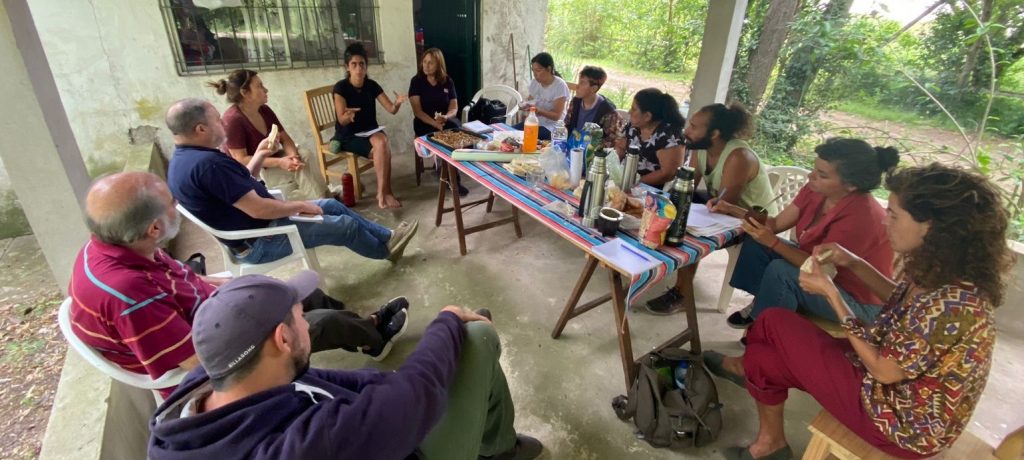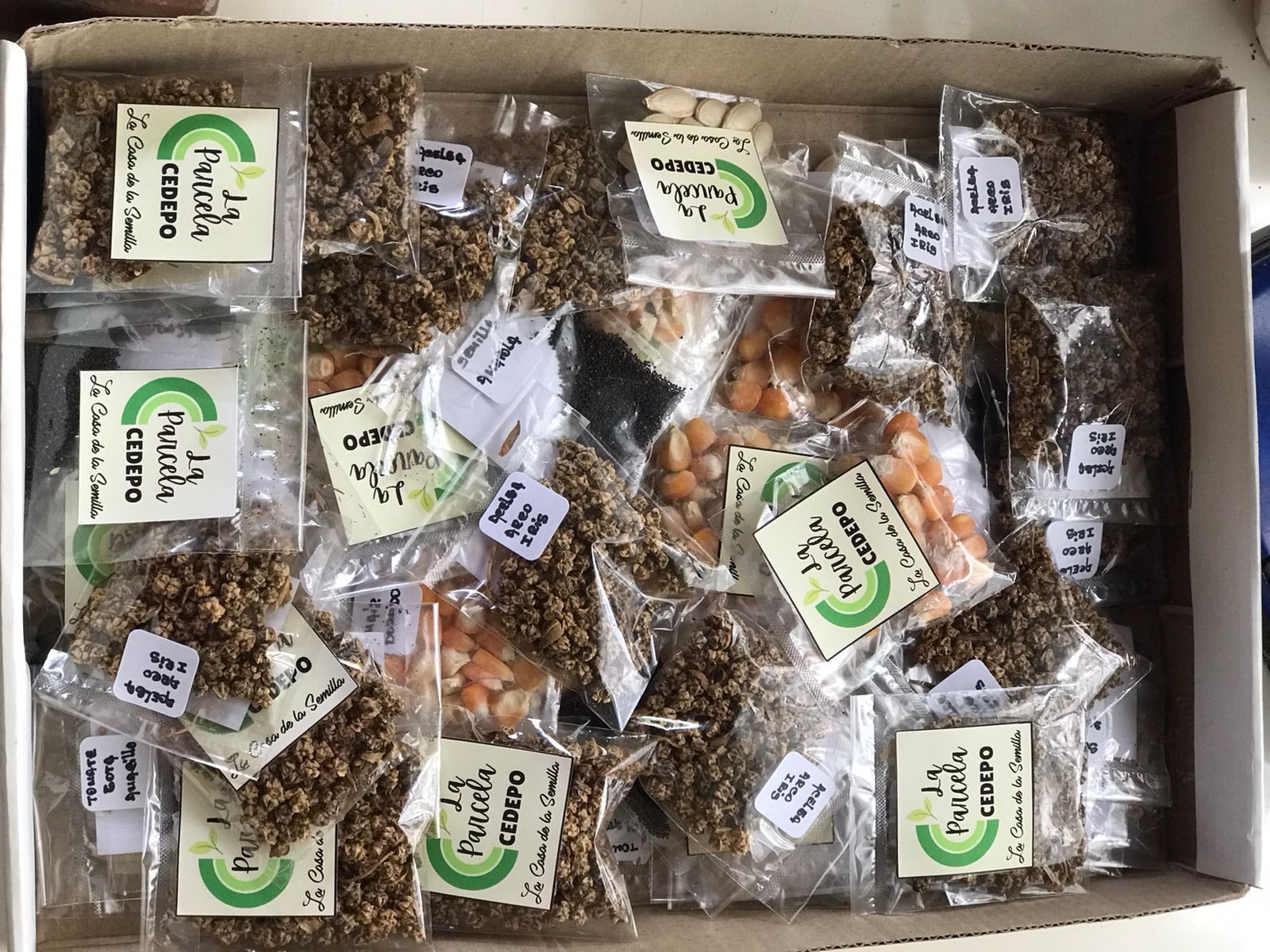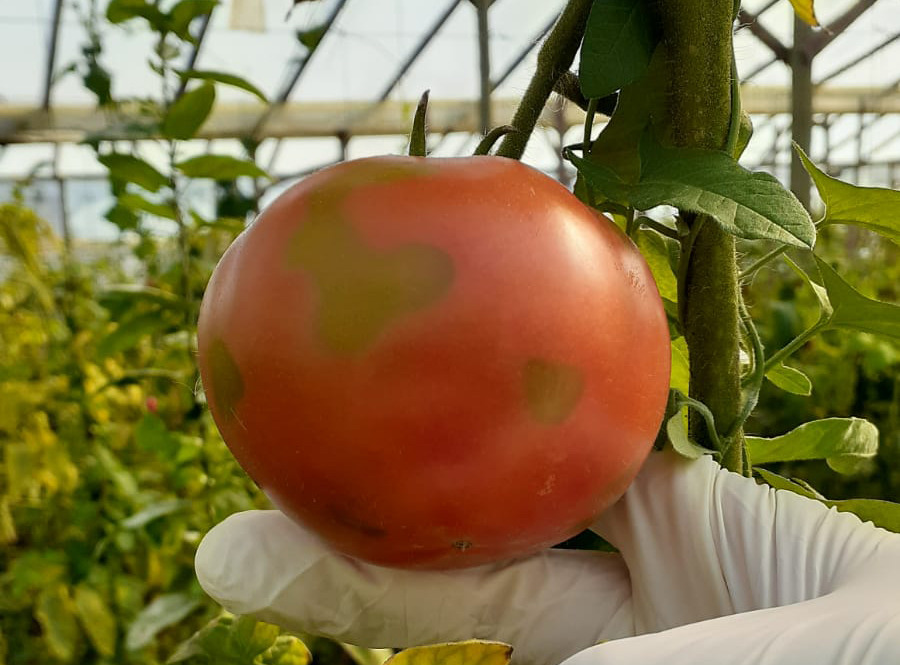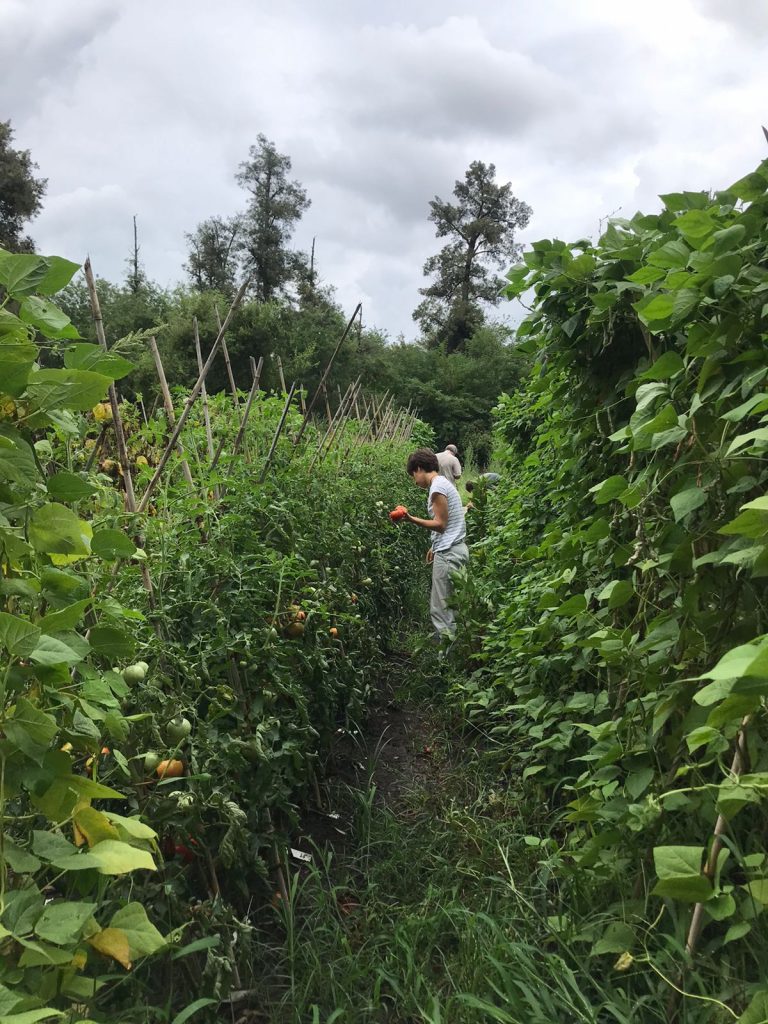
On November 21, the first participatory tomato breeding workshop was held as part of the project “Bioleft, participatory innovation in seeds”, supported by the program on Citizen Science led by the Ministry of Science, Technology and Innovation (MINCyT). In this project, Bioleft and Minka, an agroecological seed production cooperative, are working together to evaluate different varieties of tomato, with the aim of developing seeds that are sustainable and high quality.

The workshop aimed to address concepts, practices and ideas about Participatory Plant Breeding. The workshop was held at CEDEPO’s plot. Thirteen people participated, including farmers-breeders from Minka, the Cooperativa de Producción Agroecológica de Guernica (COPA) and CEDEPO, plant breeders from the Faculty of Agronomy of the University of Buenos Aires (FAUBA), the Ministry of Agricultural Development of the Province of Buenos Aires (MDA) and INTA Florencio Varela and extensionists from Bioleft.
Here we synthesize the main topics covered at the workshop:
Rough Tomato Virus
The first topic covered was the Rough Tomato Virus. The symptoms of this virus first appeared in early The first topic covered was the Rough Tomato Virus. The symptoms of this virus first appeared in early 2023 in Corrientes, in the northeast region of the country. Due to the lack of the necessary reagents, the samples were sent abroad for analysis and gave a positive result. In this situation, the National Service of Agricultural Health and Quality (Senasa) issued an alert whereby producers who detect symptoms consistent with the virus must inform the agency to take samples and determine if it is or is not this virus. Currently, the necessary reagents are already available, so the analysis is much faster.

The plant infected with this virus shows discoloration (first yellowing, then browning) and swelling of its leaves, especially on the youngest ones, leaving their veins darker. The fruit shows uneven ripening with the appearance of brown spots. The virus is related to the cucumber mosaic virus, tomato mosaic virus and tobacco mosaic virus; and it also affects peppers.
It is a virus with high resistance and persistence in the soil that is transmitted mainly through contaminated seeds and mechanical contact. The virus entered through seeds from other countries, but it is unknown with certainty which or which infected varieties entered.
The origin of the virus in imported seeds led to the reflection on how the dependence on improved seeds in other countries threatens the sustainability of horticultural production, not only for family producers but also for those who produce on larger scales. The seeds disseminated in global markets are improved to have high yields, as long as they are used as part of a technological package that includes fertilizers and biocides. In this context, the need to have own seeds becomes more relevant and validates the work done by organizations such as Minka and Bioleft, and institutions such as INTA. In the workshop, the opportunity was raised to incorporate the resistance of the different materials tested to the rough virus into the project evaluation parameters, if symptoms consistent with the disease were to appear.
Hybridization and other key concepts in genetics
Another topic covered was hybridization, reflecting on its uses, benefits, and limitations. Hybridization is a tool that allows crossing two different varieties to obtain a plant with certain desirable characteristics related to shape and size of the fruit, flavor, yield tolerance to diseases, crop cycle duration, and post-harvest life, among others. Seed companies generally prioritize this type of breeding due to the inconvenience of using the seeds harvested by producers, who, to maintain their yields must purchase new seeds year after year. In addition to the dependence that this generates, hybrids can present adaptability problems if they are not cultivated under certain parameters such as soil type, irrigation, fertilization, use of agrochemicals, etc. It also makes them more vulnerable to the presence of new diseases or pests, such as the Rough Brown Fruit Virus of tomato.
Other concepts related to genetic improvement in tomato were also explained. As it is an autogamous pOther concepts related to genetic improvement in tomatoes were also explained. As it is an autogamous plant with a high percentage of self-pollination (more than 90%) it gives advantages when fixing a desirable characteristic. These characteristics determine a phenotype and are the result of the interaction of its genome with the environment.
Techniques and considerations when designing a plot

The workshop discussed techniques and considerations for designing a plot to obtain pure seeds. Although, as mentioned above, tomatoes have a high percentage of self-pollination, cross-pollination can occur, so some precautions must be taken.
First, it is important to plant the selected varieties at least 50 meters apart from other varieties. This will help to reduce the risk of cross-pollination from wind or insects.
Additionally, physical barriers can be used to reduce the wind’s impact on pollination. These barriers can be made of inert materials such as mesh, boards, or tarps. Alternatively, live barriers of tall-growing plants such as corn can be used.
Another technique to reduce cross-pollination is to plant flowers that attract pollinating insects. These flowers will distract the insects from the tomatoes, reducing the chance of cross-pollination.
If cross-pollination does occur, bags of fine mesh can be used to cover the flowers before they open. This will prevent external pollen from entering the flowers.
Another participatory breeding experience within Bioleft
In relation to participatory plant breeding, Gustavo spoke about the work that is being done at FAUBA through the Tomato Breeding Program “Al rescate del tomate criollo”, together with Bioleft and the support of the Ministry of Agrarian Development (MDA) Gorina Experimental Station, from where a network has been generated throughout the country that evaluates a series of tomato varieties in a participatory way.
The workshop was a very enriching experience in which the exchange of knowledge and practices was central, complemented by theoretical concepts and experiences from the institutions and organizations present. Soon, we will be holding a workshop on post-harvest seed practices for proper storage. Would you like to join us?